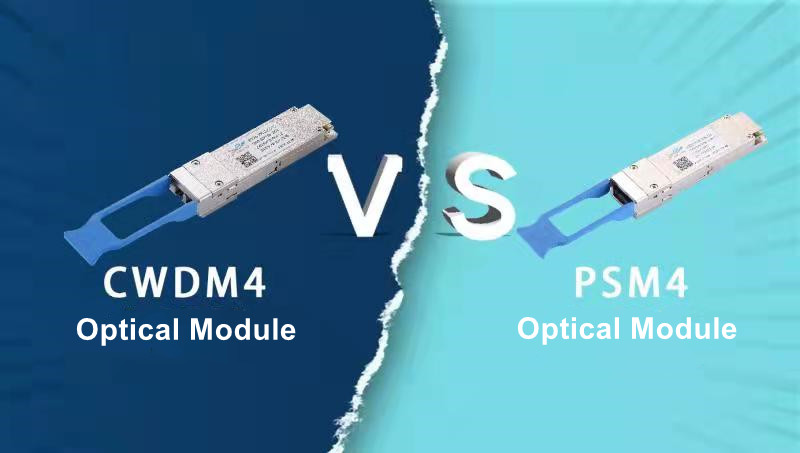
Comparison between 100G QSFP28 PSM4 and 100G QSFP28 CWDM4 optical module
The arrival of the 5G era has brought great opportunities to the optical communication industry, and users have increasingly high requirements for high-speed data transmission. At the same time, it is also driving the upgrade from 100G to 400G. Among 100G optical modules, QSFP28 is the most common type of optical module. So today, let's talk about the difference between the 100G PSM4 and the 100G CWDM4 optical module.
100G QSFP28 PSM4 optical module
The packaging form of the 100G QSFP28 PSM4 optical module is a hot pluggable QSFP28, with a working temperature range of 0 ° C to 70 ° C and DDM digital diagnostic monitoring function. Its interface type is 12 core MPO/MTP (the middle of the interface is not enabled with 4 core optical fibers), with a maximum power consumption of less than 3.5W. It is a four channel full duplex transceiver integrated module, with a data rate of 25.78Gbps per channel and a maximum rate of 103.125Gbps, complying with the Multi Source Protocol (MSA), It is a low-power and high-speed product.

100G QSFP28 CWDM4 optical module
The 100G QSFP28 CWDM4 optical module is mainly used in 100G CWDM4 Ethernet and InfiniBand 4x EDR links. It uses coarse wavelength division multiplexing (CWDM) technology to composite optical signals of different wavelengths (1270nm, 1290nm, 1310nm, and 1330nm) into a single fiber for transmission, with a transmission rate of 103.1Gbp and a duplex LC optical interface. With a single mode jumper OS2, the maximum transmission distance can reach 2KM.
100G QSFP28 PSM4 vs100G QSFP28 CWDM4 optical module
1. Cost: The CWDM4 optical module is cheaper than the PSM4 optical module. When the link distance is long, only two single-mode fibers are needed, while the PSM4 requires 8-core single-mode fibers.
2. Laser: PSM4 uses four integrated silicon photon modulators and one distributed feedback laser, while CWDM uses four non cooled DFB lasers with a wavelength interval of 20nm.
3. Connector: The CWDM4 optical module adopts a duplex LC connector, while PSM4 optical module is 8/12 core MPO/MTP.
4. Central wavelength: The central wavelength of the PSM4 optical module is 1310nm, while CWDM4 optical module are 1271nm, 1291nm, 1311nm, 1331nm.
5. Transmission distance: Compared to the CWDM4 optical module, PSM4 optical module has two transmission distances: 500M and 2KM, while CWDM4 optical module has a maximum transmission distance of 2KM.
6. Working principle: The CWDM4 optical module adopts coarse wavelength division multiplexing technology, which combines four wavelengths of optical signals into a single fiber for transmission. The PSM4 optical module adopts parallel transmission technology, which uses four independent single mode fibers to transmit four identical wavelengths.
7. Fiber type: The CWDM4 optical module is connected using duplex single-mode LC fiber jumpers, while the PSM4 optical module is connected using ribbon single-mode MPO fiber jumpers (8/12 cores).
Compared with the PSM4 optical module, the advantages of CWDM4 optical module are not only low cost but also transmission distance. Currently, 100G CWDM4 is also the preferred choice for most people. The above is what ETU-LINK has introduced to you. If want to learn more details, please feel free to leave a message on the website.
Categories
New Blog
Tags
New Products
© Copyright: 2024 ETU-Link Technology CO ., LTD All Rights Reserved.

IPv6 network supported
Friendly Links:
易天官网